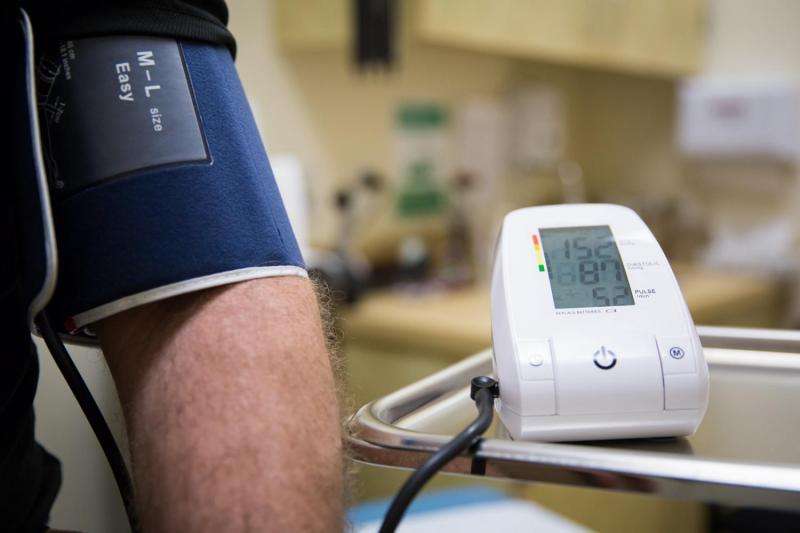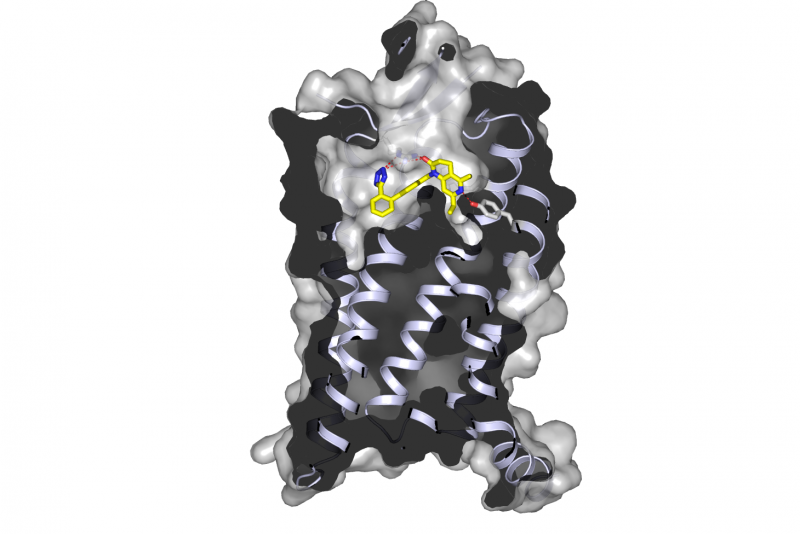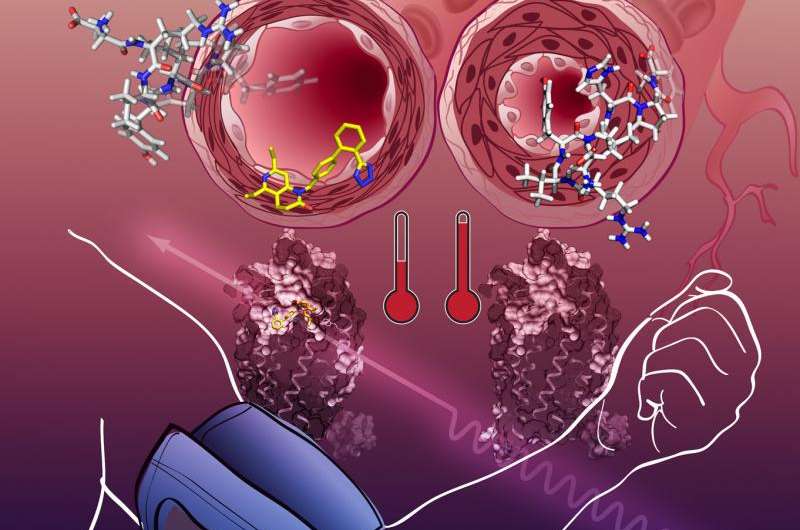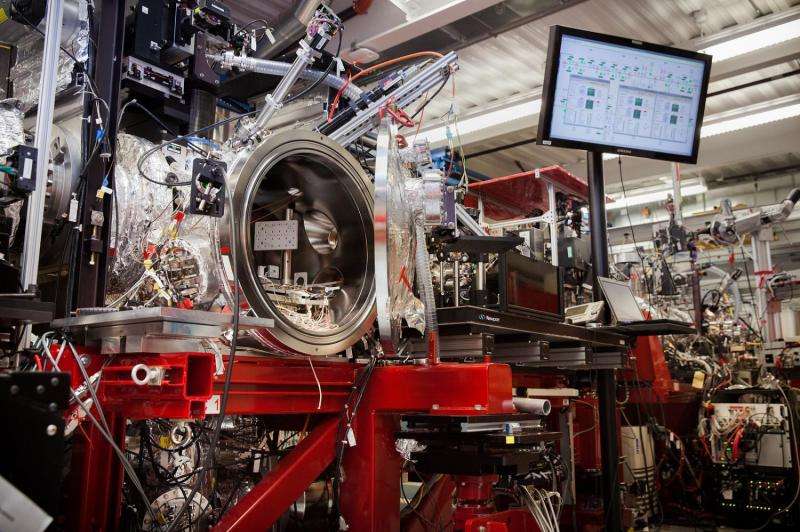X-ray study may aid in designing better blood pressure drugs

An experiment at the Department of Energy's SLAC National Accelerator Laboratory has revealed in atomic detail how a hypertension drug binds to a cellular receptor that plays a key role in regulating blood pressure. The results could help scientists design new drugs that better control blood pressure while limiting side effects.
The research focused on a type of drug known as an ARB, or angiotensin receptor blocker. Used by millions of people each year, ARBs are designed to block a receptor in cell membranes so it cannot bind with angiotensin II, a hormone that induces the constriction of blood vessels, causing an increase in blood pressure.
"Many ARBs have been developed, but the interaction between the drug and the receptor has been unknown at the atomic level," said Vadim Cherezov, a chemistry professor at the University of Southern California who led the experiment at SLAC's Linac Coherent Light Source (LCLS) X-ray laser, a DOE Office of Science User Facility.
"Now we have determined the structure of the joined ARB and receptor in atomic detail, and we have shown that all of the previous molecular models - the best guesses for how they fit together - were wrong in many important details," Cherezov said. "These results can be used to design other types of compounds and predict how they will bind to the receptors." The results are detailed in the May 7 issue of Cell.
Fighting a 'Silent Killer'

About three in 10 U.S. adults suffer from hypertension, or high blood pressure, and about 75 percent of them take prescribed medication to treat it. Hypertension is a major risk factor for heart disease and stroke, the leading causes of death in the U.S., and it is known as a "silent killer" because there may be no outward symptoms.
"Everybody would like to find the agent or mechanism to more actively and efficiently control blood pressure," said Dr. Stanley G. Rockson, professor of cardiovascular medicine at the Stanford School of Medicine. "If we can understand the molecular mechanisms better, and come up with a targeted drug that's more effective, we can streamline therapy."

ARBs are a multibillion-dollar industry, with fewer side effects than some other hypertension medications. But because their effectiveness at higher doses may be limited, they are often used in combination with other drugs, complicating treatment when patients fail to follow the complete regimen, Rockson said. The development of a single, more effective drug would help.
A Brighter Way to Study Challenging Samples
In the SLAC experiment researchers studied nanoscale crystals that contained many copies of an experimental ARB coupled to receptors. The crystals were grown in a toothpaste-like material that mimics their fatty surroundings in cell membranes. A specialized nozzle oozed a thin stream of the crystal-containing paste into the LCLS X-ray pulses, producing patterns that were used to solve the 3-D structure of the combined drug and receptor.

This technique and the unique LCLS X-ray pulses give scientists powerful new tools to study delicate, challenging samples such as medically important proteins. LCLS produces X-rays a billion times brighter than conventional light sources.
Researchers from SLAC's Stanford Synchrotron Radiation Lightsource (SSRL), another DOE Office of Science User Facility, aided in the data analysis and 3-D mapping work.
Cherezov said his research team plans to study the same receptor in combination with other drug compounds to fill in more details about its signaling mechanisms.
"We would like to look at different compounds with the receptor to see the picture more completely," Cherezov said. "With this information you can accelerate the design of new drugs."
Journal information: Cell
Provided by SLAC National Accelerator Laboratory





















